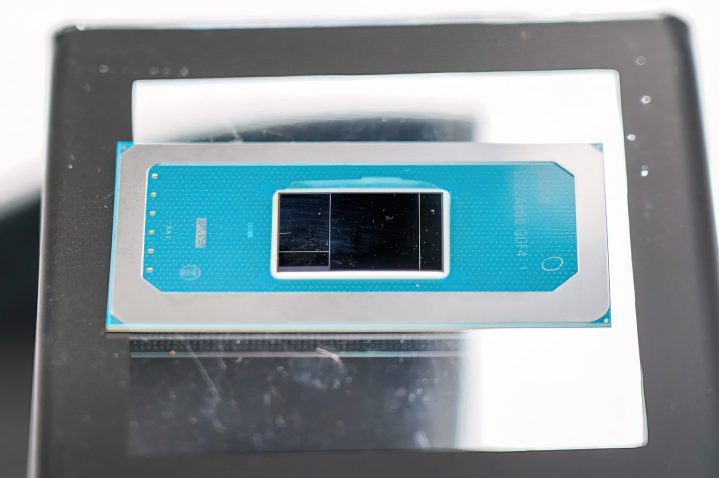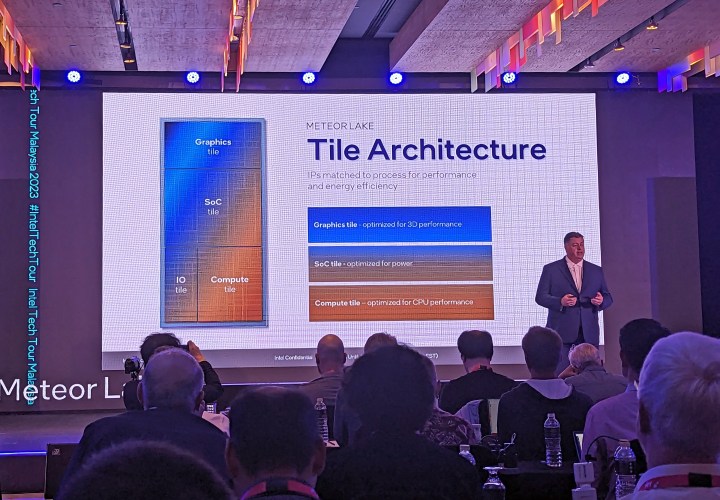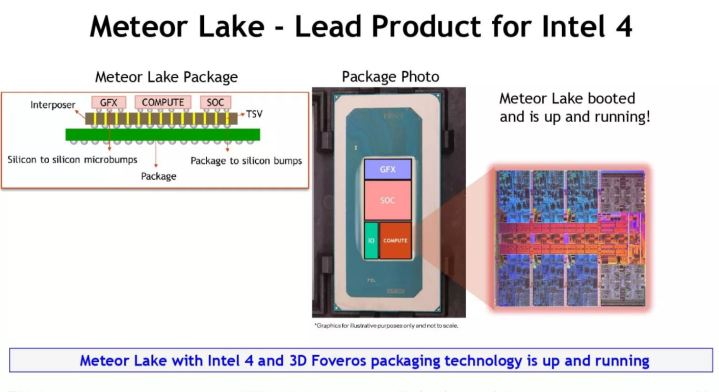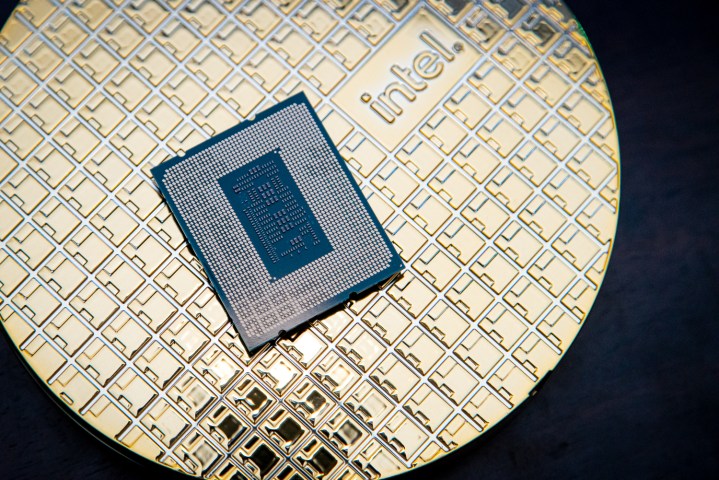Intel’s 14th-gen Meteor Lake processors are here, and they’re ready to compete against some of the best processors for laptops. While they don’t currently — and may never — have desktop counterparts, Meteor Lake chips bring improved graphics performance, AI capabilities, and high core counts to thin and light laptops.
What’s new in Meteor Lake, and what will these CPUs excel at? With Intel’s announcement, we now know the answers to those questions.
Pricing and release date

Intel Meteor Lake officially launched on December 14, 2023, with several chips being made available in laptops made by Intel’s partners. Prior to that, Intel revealed more information about the lineup during the Intel Innovation conference held earlier in 2023.
One important piece of news is that Meteor Lake is not coming to the DIY desktop PC market. However, it will eventually also be available in all-in-one PCs, such as the Intel NUC.
According to Intel, the laptops equipped with Meteor Lake will be available right away — but as the market has previously taught us, that may not always be the case. It may take some time for the widespread availability, and it still competes against Intel’s previous-gen CPUs from the Raptor Lake range, not to mention AMD’s mobile CPUs and APUs. All in all, Intel predicts that there’ll be plenty of Meteor Lake laptops to go around, with over 230 unique designs available.
Intel has confirmed Meteor Lake CPUs will carry new branding. The company is ditching the “i” it used for over 15 years and replacing it with “Core Ultra” branding. To that end, we’re expecting eight Intel Core Ultra CPUs at launch, and three more models will follow in the first quarter of 2024.
Intel Meteor Lake will be split into two distinct lineups — The Core Ultra-H and the Core Ultra-U. The CPUs will range from the Core Ultra 5 to the Core Ultra 7 for starters, but there’ll be a Core Ultra 9 185H coming out in 2024.
As far as pricing, it’s tough to say, as laptop chips don’t exactly come with a price tag of their own, and the final price is always affected by the rest of the components and the brand. Some early partners suggest entry-level Meteor Lake laptops could arrive at $1,500, which is much more expensive than the previous generation.
Specs

Intel has already shared the specifications of 11 Core Ultra processors, including core counts and clock speeds. There might be more CPUs coming later on, though.
Launching on December 14, the Core Ultra-H lineup serves up four chips. The most powerful processor of the four (and in general, out of all the ones launching in 2023) is the Core Ultra 7 165H, equipped with 16 cores (6 P-cores and 8 E-cores as well as 2 LP E-cores) and 22 threads, 24MB of cache, and a maximum Turbo P-core clock speed of 5.0 GHz. The Intel Arc GPU found within claims 8 Xe-cores. Coming up next is the Core Ultra 7 155H, which has the same core count and a slightly lower clock speed (4.8GHz).
Next, we have the Core Ultra 5 135H, with 14 cores (4 P-cores, 8 E-cores, and 2 LP E-cores) and 18 threads. This CPU sports a smaller cache (18MB), fewer GPU cores (seven), and a decrease in maximum frequency, topping out at 4.6GHz for the P-cores. There’s also the Core Ultra 125H, which once again merely lowers the clock speed to 4.5GHz.
The Core Ultra-U lineup is designed to prioritize battery life and portability, so it has fewer cores across the board. All the chips have the exact same core count and distribution, meaning 12 cores (2 P-cores, 8 E-cores, 2 LP E-cores) and 14 threads. The GPU is also consistently worse than in the H-series, with only four Xe cores. The Core Ultra 7 165U maxes out at 4.9GHz, followed by 4.8GHz for the Ultra 7 155U, while the Core Ultra 5 135U and 125U have 4.4GHz and 4.3GHz, respectively.
The three CPUs that are still yet to come out include the top-of-the-line chip, meaning the Core Ultra 9 185H, with 16 cores and 22 threads, 24MB of cache, and a maximum clock speed of 5.1 GHz. This CPU might end up in some of the best laptops for those who want a lightweight but capable notebook.
Lastly, the Core Ultra 7 164U and the Core Ultra 5 134U each sport 12 cores and 14 threads but only four Xe-cores. The 164U serves up a max frequency of 4.8GHz, but the 134U knocks that down to 4.4GHz.
Regardless of the exact model, all of the processors are fairly conservative when it comes to power consumption, which should translate to better battery life, but at the cost of performance. Most chips range from 9 to 28 watts (base) and 30 to 115 (turbo). However, the Core Ultra 9 starts at 45W and can go up to 115W.
Architecture

Architecture is where we have the most news on Meteor Lake processors. This is the generation where Intel plans to bring its road map together, unifying several dies from multiple vendors while still taking advantage of a hybrid architecture.
The CPU itself is built on the Intel 4 process, and Meteor Lake will be the first to feature this node (following Intel 7 on Alder Lake and Raptor Lake). What’s more interesting is how Intel is changing the design to compete with Apple processors. In addition to the main compute die, Meteor Lake also has separate GPU, IO, and system-on-a-chip (SoC) dies. Intel refers to its approach as the “3D Performance Hybrid Architecture,” talking about how Meteor Lake boasts the compute tile, a low-power island, and disaggregated tiles, all of which are optimized with tech like Intel Thread Director to make sure that tasks are being scheduled efficiently.

Competing with Apple seems like Intel’s goal, as it wants to provide not just a CPU, but an entire computer on a chip (similar to Apple’s M-series processors). This is enabled by Intel Foveros, which is a multi-die packaging technology that Intel has been chipping away at for years.
This approach could help Intel push more efficient CPUs with a larger set of features. It could also make Meteor Lake tough to execute, though. With so many dies, Meteor Lake seems vulnerable to delays and manufacturing mishaps, but we’ll have to wait and test this ourselves.
Intel is using new Redwood Cove cores for performance and Crestmont cores for efficiency. Just like the previous two generations, Intel is combining two different core types in the compute die to provide large numbers of cores without the increased power draw associated with them. It also introduces a new core type, the low-power Efficient-cores (LPE), designed to handle scalable multithreaded tasks and background tasks without burdening the full-blown E-cores. Intel promises to deliver noticeable instructions-per-cycle (IPC) gains for all core types.
Intel is using its own Arc GPU architecture for all the chips, serving up Xe-cores that enable gaming and AI workloads. However, with only eight cores, these notebooks will not rank high among the best gaming laptops, but they should be sufficient for older titles and indies.
In addition to CPU and GPU tiles, each Meteor Lake processor will have a dedicated AI processor referred to as the neural processing unit (NPU). It will tackle AI workloads, enabling low-power AI acceleration without burdening the CPU and the GPU.
All Meteor Lake chips will support Wi-Fi 7 and 6E connectivity as well as LPDDR5 and 5X RAM, as well as PCIe Gen 5 and Gen 4.
Performance

The biggest hints for Meteor Lake’s performance right now all relate to the Intel 4 manufacturing process, which Intel teased delivers 21.5% higher frequencies than the previous node at the same power or a 40% power reduction at the same frequency.
Higher frequency doesn’t inherently mean a better-performing processor. Frequency seems like a push for Intel, though, so it could help with 14th-gen chips. The most recent leaked benchmarks we’ve seen show the Core Ultra 7 155H reaching single-core performance of around 2,200 and multi-core performance of around 12,000 in Geekbench 6. That’s not quite as powerful as the flagship Core i9-13980HX we see in laptops like the MSI GT77 Titan now, but it’s around the same level as the current Core i7-13700H.
According to Intel, we can expect improvements in raw performance and performance per watt. The Core Ultra 7 165H is said to be 11% faster than the Ryzen 7 7840U and 8% faster than the last-gen Core i7-1370P when running at similar power in multithreaded tasks. The P-cores see bigger gains, with Intel beating its last-gen counterpart by 21%.
Seeing as these chips will mostly end up in laptops made for work, Intel also included some benchmarks for UL Procyon, Premiere Pro, and Lightroom. Meteor Lake wins by 19% to 41% across these tests.
We also know more about Meteor Lake’s GPU performance. The company promises graphics performance that’s twice as fast when compared to an Intel Core i7 CPU and running at 28 watts; this is in a match between the Core i7-1370P and the Core Ultra 7 165H. Some games see massive gains, such as Baldur’s Gate 3, which is reportedly 100% faster on the Meteor Lake than the Raptor Lake chip. It’d be interesting to see the frames per second (fps) count here, though.
Intel also compared the Core Ultra 7 165H to the AMD Ryzen 7 7840U in a test suite made up of 18 games running at native 1080p resolution. Depending on the laptop, the Intel solution was either equal to AMD or anywhere between 5 and 11 percent faster.
Lastly, Intel touts the many benefits of Intel XeSS, promising to deliver an average of 82 fps on the Core Ultra 7 165H with XeSS enabled, compared to the mere 26 fps the Core i7-1370P achieved without XeSS.
Unfortunately, in our own testing of Core Ultra CPUs, they didn’t deliver the generational leap we were expecting. The CPU gains are small, sometimes even beaten by last-gen options like the Ryzen 7 7840U. Thankfully, GPU performance is much better, which seems to be the winning area of Meteor Lake.
Laptops only?

A slew of leaks have pointed to the fact that Intel will release a refreshed version of Raptor Lake on desktops in 2023 instead of using its new Meteor Lake architecture. Many suspected that meant users would have to wait for Intel’s 15th-gen Arrow Lake processors to debut a new architecture on desktop.
Intel has since confirmed that Meteor Lake will be coming to desktops, but not in a socketed form. This means you won’t be able to buy and install this chip in your PC build, but it’ll make its way to all-in-one PCs.
Editors' Recommendations
- It just became the perfect time to buy a last-gen Intel CPU
- Intel’s new CPU feature boosted my performance by 26% — but it still needs work
- The only Intel CPU you should buy is over a year old
- Everything we know about Lunar Lake, Intel’s big next-generation chips
- Reviewers agree: Intel’s latest chip is truly ridiculous





